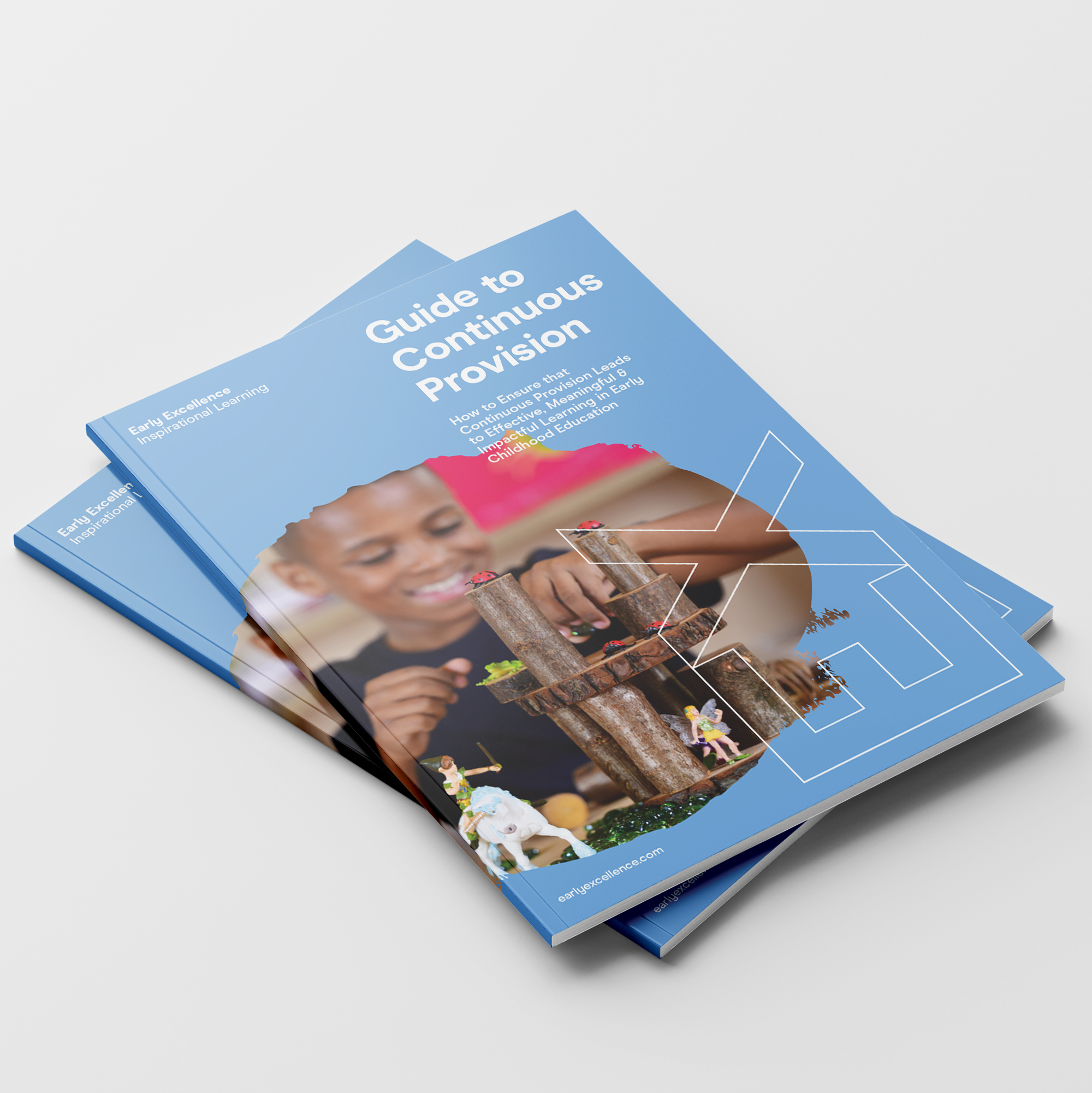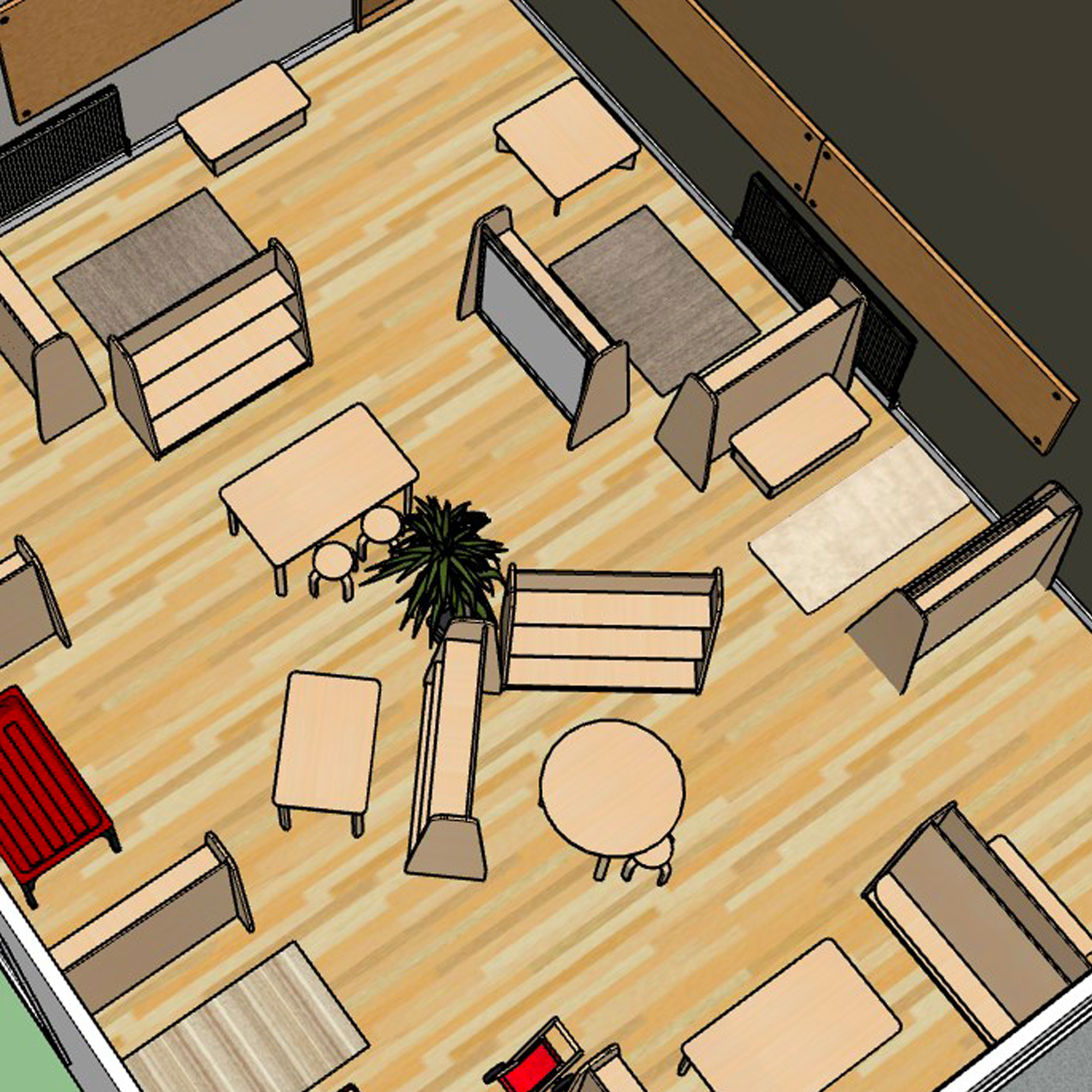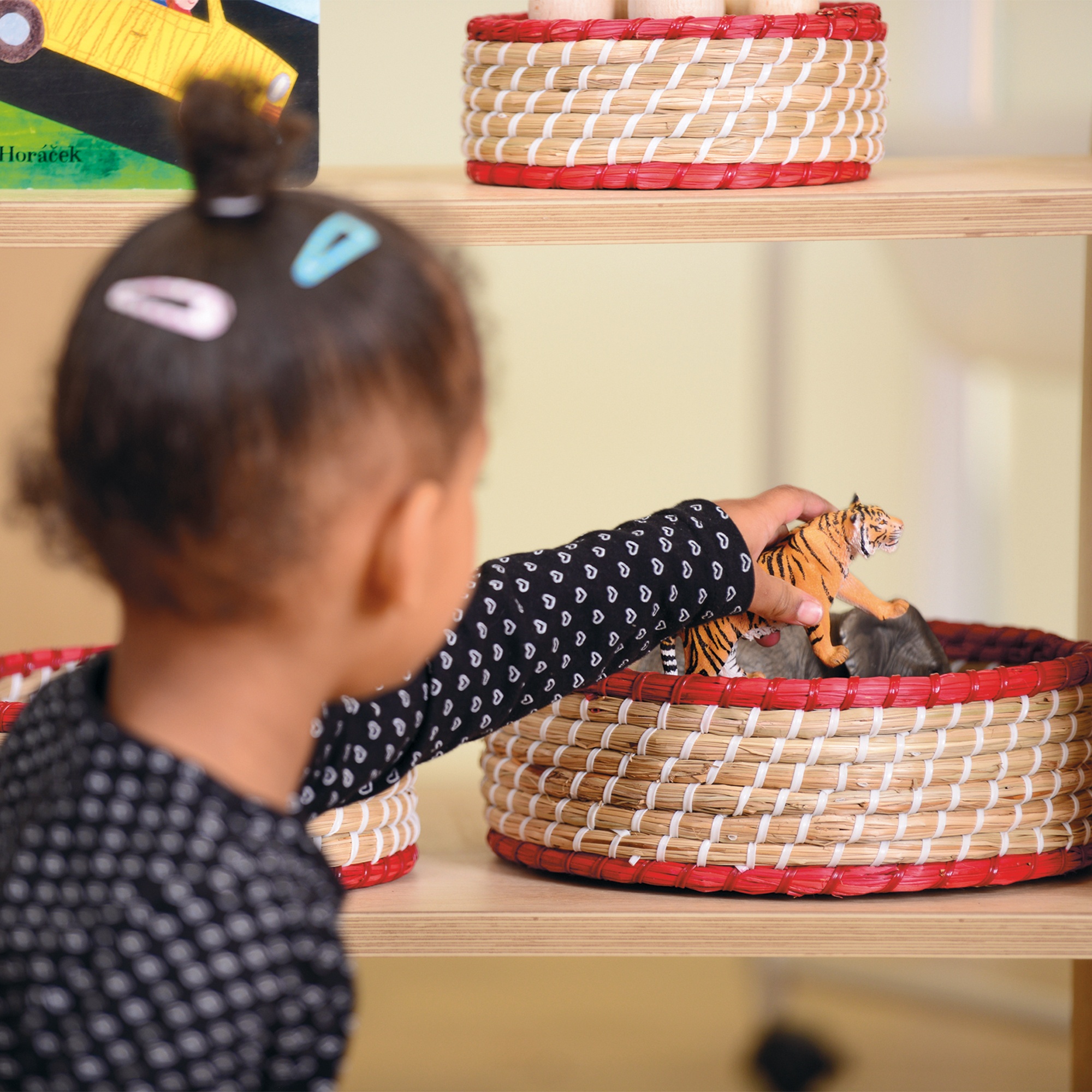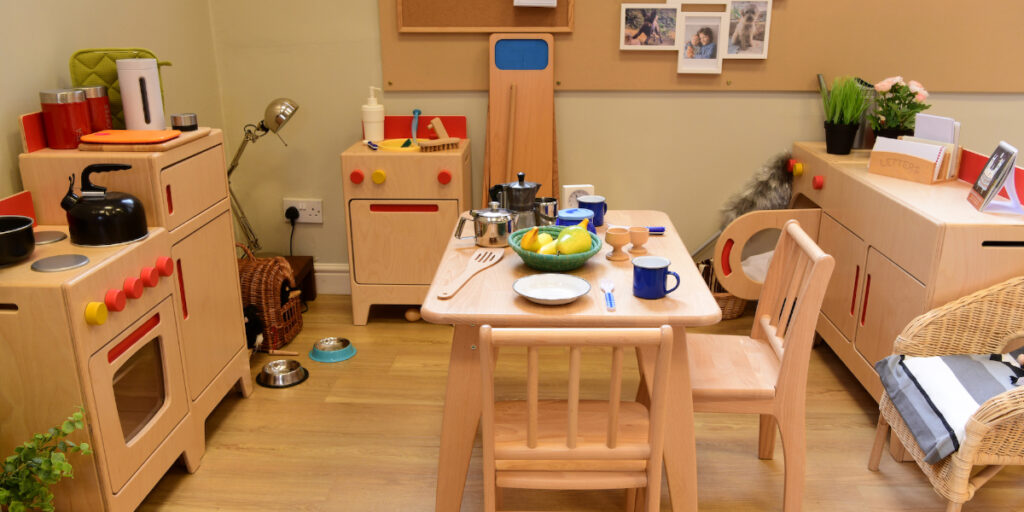One thing that always puzzles me about Early Years education is how quick we are to change things in our classrooms and settings. We plan out our classroom at the start of the year and stand back proudly admiring our work. “This is it” we say to our colleagues, “I’ve got my room just how I want it”. Wind the clock forward a few weeks though, and we’re already starting to think about making changes.
This article is also available as a podcast:
Changing just one piece of classroom furniture?
It’s the classic situation that will be familiar to many of us, we want to freshen up our room and start by moving a single piece of furniture. We might start by turning the piece of furniture around or making more space in an area. All fine so far, except that I think we all know that things won’t stop there. No, because moving one piece of furniture nearly always has a knock-on effect. Moving one piece of furniture makes the area next door too small and so we change that one too. Before we know it, what started as one small tweak to our environment, has ended up with a major overhaul to the classroom layout.
We are often quick to change over resources too.
Some settings will plan a whole week’s worth of additional resources, challenges and activities in one go. In settings like this, staff spend time at the end of every week changing over resources, and then when Monday morning comes, staff have one carpet time session to explain everything that’s different about the room this week.
In other settings, we have more of some sets of resources than others and this also leads us to change things round. Construction kits are a classic example. Often settings will have some construction kits set out for the children to use but then have lots more kept in the cupboard. This often leads to a process of rotation- the Duplo and Mobilo for the first half term, for example, followed by Lego and K-nex up until Christmas, then other kits from January, and so on.
There are other key areas prone to regular changes and makeovers too. The home corner is a classic example. At the start of the school year home corners are, quite rightly, a predictable and valuable part of the practice. Fast forward to the end of November though and, with Christmas quickly approaching, the home corner is on borrowed time. As if by magic, the role play suddenly has to be Christmas related and so we do away with home corner role play, a meaningful context for children to explore familiar roles and events, and replace it with the opposite – a Christmas elf wrapping station or Santa’s grotto!
In fact, changes to our classroom environment in this way are often seen as a positive and are celebrated as such. Instagram and Pinterest are full of beautiful but often temporary provision areas. Other members of staff might often walk through an Early Years classroom and talk positively about any new features. Whenever I’ve asked a member of an EYFS team to think about how many changes happen, they are often very quick to tell me about the positive impact on the children’s learning. They tell me about how excited the children get when they come back after a half term break to find new construction kits, a new role play area and other changes to the environment.
Yet, it’s this view of Early Years practice that I think we need to question.
What is the children’s excitement based on? How do they feel about the space and resources following on from the changes? Will it lead to more effective learning? In my experience, too much change can lead to a manic, nervous excitement in young children. Excitement, yes, but built on insecurity. This happens to us as adults too – the time you go to your usual supermarket only to find that they’ve swapped around all of the aisles, or when you try to cook a familiar meal in a friend’s kitchen – both examples of how our environments affect our security and independence.
My concern is that early years teams devote time and energy in making changes that have few gains and could even have a negative impact.
Many of the Characteristics of Effective Learning are based on familiarity and security rather than change.
Continuity of materials over time allow children to return to ideas and concepts that interest them and can provide a context for powerful learning. In my experience, levels of wellbeing and involvement are usually built on a degree of calm, confidence and security – and this independence is fostered through familiarity.
Of course, Early Years education is far more nuanced than a simple ‘continuity is good/change is bad’ scenario. Identifying which resources in each area of provision offer the greatest variety of possibilities and are used the most by children is vital – as these resources must remain part of your continuous provision and be available right the way through the year.
In the construction area, offer a small number of sets all the time – two or three different sets are usually about right – and store them so that the children can access the separate parts, like wheels and connectors, easily. This continuity – provided that the sets offer a wide range of challenges – will enable children to build increasingly complex models over an extended period of time. Any additions to this area should be informed by how children use these sets and your conversations with them. It might be that the children have been fascinated by building bridges or by constructing vehicles. If so, then there are a number of enhancements that you might want to add in over time. Think of selected images, books and materials that will extend and challenge their thinking.
Keeping it meaningful is the key here.
Additions to the environment should make sense to the children as well as the adults. So, as Christmas approaches, don’t change your home corner into a Santa’s grotto or an elf’s present wrapping station. Children will find it hard to make sense of what they are supposed to do in areas like this. Instead, if you want to add the magic of Christmas to your classroom, then keep your home corner as it is but add a ‘getting ready for Christmas’ theme. Add in a small Christmas tree, some decorations, a Christmas recipe book, greetings cards and Christmas stockings and you’ll be providing a meaningful context for children to explore this celebration and talk about their own experiences and traditions. The same could be done for other celebrations such as Hanukah, Divali, Eid or birthdays.
So, in conclusion, enhance your EYFS areas of continuous provision when it is necessary and meaningful, using your knowledge of the children to plan small additions.
Two or three meaningful and responsive additions each week will provide plenty of opportunities for discussion and exploration without staff falling into the cycle of planning changes throughout.
My concern with planning lots of new experiences, challenges and activities each week is that it not only changes the classroom, it also changes our focus as EYFS teachers and practitioners. The changes can negatively affect the interactions and relationships that adults have with children, with opportunities to build learning relationships being squeezed out by a greater need for logistical conversations.
Probably the biggest impact of a changing classroom though is the impact it has on us as Early Years teachers and practitioners. Constant change can lead us to be ideas driven rather than reflective and responsive to children – we search for ideas from external sources rather than tune into children’s interests and fascinations. The more we search for ideas on Pinterest and Instagram, the less we reflect on what is happening within the four walls of our own classroom environment.
So, the next time you feel the urge to change your classroom, stop and think carefully about how that change will affect the learning environment and the relationships between children and adults within the space. When it comes to effective EYFS practice, change isn’t always for the better.
Andy Burt, Early Excellence Curriculum Consultant

Explore key principles and consider how an effective environment, carefully planned and organised, promotes a broad range of learning opportunities for children with our EYFS webinar packages or discover our Guide to Continuous Provision

If you are planning to refurbish your EYFS and/or KS1 classrooms, do explore our Classroom Design Service and Outdoor Design Consultancy services.

To support the organisation and display of early years resources and continuous provision, we supply a unique range of early years storage containers including colourful boxes, plastic storage trays and pots along with highly attractive seagrass baskets and natural bowls.

